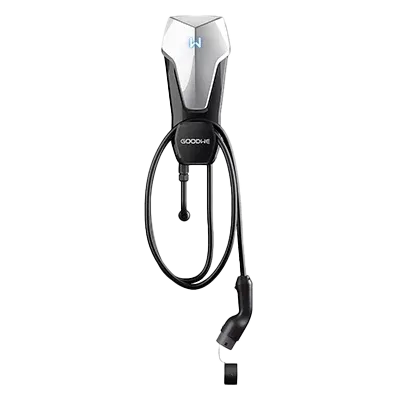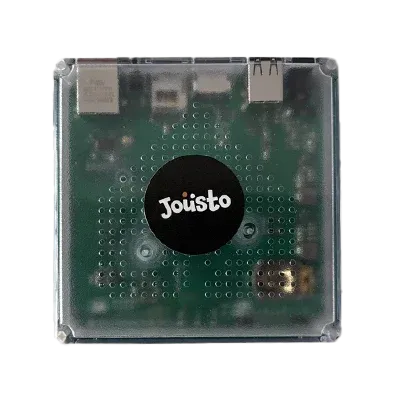
GoodWe EV Charger 7kW
Single-phase AC charger (IP66), perfect for most Aussie homes. Pair with Energy Hub for solar-aware charging.
Choose a charger, add the Jousto Energy Hub to charge from sunshine and cheap off-peak power, then book installation. Simple, smart, and ready for every EV.

Quality hardware, great value — and smarter with the Jousto Energy Hub.

Single-phase AC charger (IP66), perfect for most Aussie homes. Pair with Energy Hub for solar-aware charging.

Faster AC charging for three-phase homes and EVs that support higher rates. Solar-smart with Energy Hub.

Make charging solar-aware on day one. Includes Genius Agent to guide your self-setup & automations.
Learn more about the Jousto Home Assistant Genius.
Choose your charger
Pick 7kW or 22kW GoodWe model.
Add the Energy Hub
$249 with Genius Agent for self-setup.
Checkout online
We’ll confirm details and schedule install.
Charge on sunshine
Smart modes for solar and off-peak.

Australia’s sunny climate, combined with rising electricity prices and growing environmental awareness, has created the perfect conditions for homeowners to invest in residential solar panel and battery systems. But while going solar is a smart move, determining the right size for your system is critical to maximizing benefits—both financially and environmentally.
This guide is designed to walk you through the most important considerations when sizing your solar and battery system. Whether you're aiming to cut your power bills, reduce grid dependence, or boost your home’s value, this resource offers an unbiased, data-driven path to help you make the best decision.
A solar system that’s too small might not generate enough energy to meet your household needs. On the flip side, an oversized system can lead to unnecessary costs and underused capacity. The right system size is one that perfectly aligns with your current and future energy use, fits your property’s physical characteristics, and supports your long-term financial and lifestyle goals.
The most critical input when sizing a solar panel system is your actual energy usage. Start by reviewing your past electricity bills—ideally for the last 12 months. This will help you calculate:
Monthly average usage (kWh)
Daily energy demand
Seasonal variations (e.g., more cooling in summer, heating in winter)
For the most accurate picture, request interval data from your energy provider or access it via your smart meter dashboard. This data reveals when you use electricity throughout the day and whether you’ll benefit most from solar energy during daylight hours or from storing power for use at night.
Energy usage isn’t static. Households often see increased energy demands due to:
Adding air conditioning systems
Buying electric vehicles (EVs)
Installing heated pools or spas
Expanding family size or adding home offices
Anticipating these changes ensures your solar and battery system is future-proof, helping avoid costly upgrades later on.
Solar panels produce the most energy when the sun is shining. If your household uses most of its electricity during the day, you’ll naturally self-consume a larger portion of your solar power, which increases ROI. If your usage peaks at night, consider integrating battery storage to capture excess solar power and use it after sunset.
This is especially important if feed-in tariffs in your area are low. It's generally more economical to consume your solar energy than to export it to the grid.
Physical space is another critical determinant of system size. Here’s what to assess:
Available roof area: A typical residential panel is ~1.7m². Calculate how many can fit on your unshaded, north-facing roof sections.
Orientation: In Australia, north-facing panels provide the highest yield. East- or west-facing can also be viable but may generate less energy overall.
Tilt: Optimal angles typically range from 15–35 degrees. Too flat (<10°) may reduce performance.
Shading: Trees, chimneys, and nearby buildings can decrease output. Use tools like SunSPOT to evaluate shading impacts.
Solar performance varies by location. For example, systems in Brisbane or Perth may produce more electricity than identical systems in Hobart or Melbourne due to higher sunshine hours.
Use data from the Bureau of Meteorology to understand your area's average daily solar exposure. As a rough benchmark, each kilowatt (kW) of panels can generate about 4 kWh/day, but that number will shift depending on your local climate.
Solar costs in Australia vary, but general pricing falls between:
$4,000–$5,500 for 3 kW systems
$6,000–$9,000 for 6.6 kW systems
$10,000–$13,000 for 10 kW systems
Key financial considerations include:
Payback period: How long it takes for savings to cover your system cost
STCs: Small-scale Technology Certificates can reduce upfront costs significantly
State rebates: Vary by region—check with your local government
A well-sized system delivers a solid return on investment in 4–6 years, depending on usage and tariff structures.
Electricity plans affect solar ROI. If your plan includes:
Flat rates: Simplifies sizing, focus on total daily usage
Time-of-Use (TOU) rates: Involves peak/off-peak pricing—battery storage becomes more valuable
Feed-in tariffs: Typically lower than grid prices; storing solar energy is more cost-effective than selling it
Designing your system to minimize reliance on grid electricity during peak times can result in significant long-term savings.
Australia’s energy networks often impose limits on how much solar you can install or export:
Single-phase connections may limit inverter size to 5 kW
Export limits may apply above certain thresholds
Approval processes are often required for systems over 5–10 kW
Speak with your installer or network provider to understand local rules before committing to a system size.
Use this simple formula:
Required Solar Size (kW) = Average Daily Usage (kWh) / Average Daily Sunlight Hours
Example: 30 kWh/day / 5 hours = 6 kW system
Add a buffer of 20–25% to account for losses and inefficiencies. A 6 kW system might become 7.2 kW with this margin included.
Standard panel: 1.7m², 400W capacity
30m² sunny roof = ~17–18 panels
18 x 400W = 7.2 kW system
If space is limited, opt for high-efficiency panels to maximize output in a smaller footprint.
Tools like SunSPOT (developed by Australian engineers), CHOICE Solar Estimator, and SolarQuotes.com.au offer valuable simulations.
They help estimate:
System size
Output based on postcode
Savings and payback time
Use them to cross-verify your findings, but always follow up with a qualified installer for a site-specific assessment.
Decide what appliances you want to run during blackouts (e.g., fridge, lights, modem). Calculate total power (Watts) and usage hours to determine the needed battery capacity in kWh.
Example: 100W fridge + 50W lighting for 6 hours = 0.9 kWh. Factor in battery depth of discharge (~80%), so usable capacity = 1.125 kWh.
If you use 10 kWh of electricity at night, your battery should store at least that amount of usable energy. This allows you to operate independently from the grid after dark.
Batteries can be charged during off-peak hours and used during peak demand, saving you money. Estimate your peak hour usage and match your battery size accordingly.
Your battery should match or slightly exceed your solar generation surplus. For instance:
6.6 kW solar system → ~25–28 kWh/day
Assume 50% exported = 12–14 kWh → choose a 10–13 kWh battery
Common pairings:
6.6 kW system + 10 kWh battery
10 kW system + 13–15 kWh battery
Websites like SolarCalculator.com.au and SolarQuotes.com.au also offer battery estimators. Input your solar system size, usage goals, and budget to get a suggested battery capacity. These tools provide a great starting point, but a local installer will provide the most accurate guidance.
Jousto simplifies solar decision-making by offering direct integration with SunSPOT, Australia’s most trusted solar and battery sizing tool.
SunSPOT is a free, not-for-profit solar and battery calculator created by Australian photovoltaic engineers. It evaluates your:
Location and sunshine hours
Household energy usage
Roof orientation and shade
Tariffs and feed-in rates
By embedding SunSPOT into its platform, Jousto helps homeowners estimate system size, savings, and battery ROI—with total transparency. It’s ideal for comparing battery options, running what-if scenarios, and calculating payback periods.
Learn more or try it out at: jousto.com.au
What sets truly optimized solar systems apart is not just the tech—it’s the approach.
Independent design means building a system that’s tailored to your needs, not influenced by vendor relationships or sales quotas. It ensures:
Objective component selection (panels, inverters, batteries)
Design flexibility for future upgrades
Performance that matches your household’s real-world needs
Financial modeling that factors in rebates, TOU tariffs, and more
By prioritizing you, independent solar design results in smarter, more cost-effective solutions.
Sizing your home solar and battery system correctly is more than a technical task—it’s a strategic decision. By considering your energy usage, roof and climate factors, tariff structures, and long-term goals, you can invest with confidence.
Remember:
Start with your own data
Use reputable tools like SunSPOT
Consult with qualified, independent experts
Focus on value, not just system size
💡 Ready to size your system the smart way?
Use the free SunSPOT calculator via Jousto and get a detailed, unbiased system estimate today.
Empower your energy future—on your terms. by clicking here: https://jousto.com.au/

© Copyright 2025.Honen Lead Generation.
All Rights Reserved.
Phone: 0489 261 333
185 Morphett St, Adelaide, SA, 5000